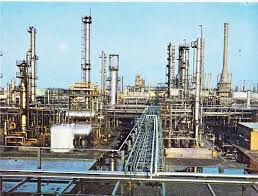1954: THE BRITISH CONSERVATIVE GOVERNMENT AND THE ENDING OF THE NATIONALISATION OF THE ANGLO-IRANIAN OIL COMPANY’S CRISIS.
Zaehner was close to Herbert Morrison, the Labour Foreign Secretary, and held his brief directly from him. Morrison was contemptuous of Musaddiq. He instructed Zaehner to manipulate internal politics in Iran to organise the fall of Musaddiq. Morrison also sent a senior officer of MI6, called C.M. Woodhouse, to form a team with Zaehner at the British Embassy in Teheran for this operation.
As Robin Zaehner was sent to Iran first, before Woodhouse, the alliance with the Rashidian brothers, by the time Woodhouse arrived in Teheran in August 1951, had been re-established. During the Second World War the Rashidian brothers and Zaehner worked together in Iran against the Nazis. In fact, since the War, their network had remained intact. They were experts on mob manipulation. Woodhouse, the senior MI6 officer, was impressed by Zaehner’s capability in enlisting the Rashidians, however, as time progressed he considered Zaehner,
as a dangerous amateur so far as serious undercover work was concerned. Zaehner himself did not possess the stamina or the ruthless determination to see his anti-Musaddiq plans through to completion. Perhaps, since he had a philosophical temperament, he was plagued with self-doubt. He began to question the wisdom of intervention. He yielded control of contact with the Rashidians to Woodhouse.¹
M. Woodhouse then flew to London to consult the Foreign Office officials. By now the Conservative Party was in power and Anthony Eden was the Foreign Secretary. He met Eden and was authorised by Eden to set up a joint operation with the CIA. Woodhouse, together with several Foreign Office officials, immediately went to Washington. He sensed that the Americans, for their part, did not reject the idea of a joint operation against Musaddiq. The CIA indicated that it was prepared to discuss the case further. C.M. Woodhouse continued with his planning until the American Presidential election was over. The British policy was now, according to Sir Pierson Dixon, ‘to play the hand along until we can sound out the attitude of General Eisenhower’s Administration to the Persian oil problem.’² By the time Dwight D. Eisenhower won the Presidential election in November 1952, Woodhouse had completed the process of undercover planning. Eisenhower’s winning the election opened for the CIA the prospect of leadership more active than Truman’s.
As was explained earlier in this article, Musaddiq by 1953 was losing support among his allies, and receiving the backing of the Tudeh party (the Communist party in Iran). The uncompromising position that Musaddiq took, which the previous chapter showed, fear of communist influence in Iran, the support that in 1953 Musaddiq was getting from the Tudeh party, and the Soviet challenge, made America alter its policy from diplomacy to intervention. The United States Government saw Musaddiq by now as too destabilising to let him stay in power and that his overthrow would be the solution to the crisis. The new Republican administration of Dwight Eisenhower was concerned about the communist takeover in Iran, and access to the rich Iranian oil reserves by the West was its worry. Eisenhower came round to the view that the answer to the crisis was intervention and toppling of Musaddiq’s government. This decision was also encouraged by the winding down of the Korean War, and more western manpower was available. On both sides of the Atlantic conservatives were in power. Additionally, both the British and American administrators, thought nationalism was too dangerous to be allowed in a strategically important part of the world, where both governments had vested interests. Woodhouse pointed out to his opposite numbers at the CIA, that if nothing was done about Dr. Musaddiq, a Tudeh (Communist) party coup may soon take place in Iran.
- J. A. BILL and W. R. LOUIS, op. cit., p. 250.
- Ibid, p. 251



